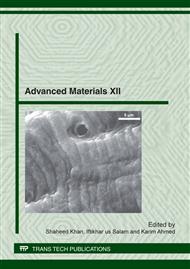p.75
p.80
p.89
p.98
p.105
p.111
p.118
p.124
p.132
Martensitic Transformation and Microstructural Characteristics in Copper Based Shape Memory Alloys
Abstract:
Martensitic transformations are first order solid state phase transitions and occur in the materials on cooling from high temperature. Shape memory effect is an unusual property exhibited by certain alloy systems, and based on martensitic transformation. The shape memory property is characterized by the recoverability of previously defined shape or dimension when they are subjected to variation of temperature. The shape memory effect is facilitated by martensitic transformation, and shape memory properties are intimately related to the microstructures of the materials. Martensitic transformations occur as martensite variant with the cooperative movement of atoms on {110}β - type plane of austenite matrix. Martensitic transformations have diffusionless character, and the atomic movement is confined to interatomic lengths in the materials. The basic factors which govern the martensitic transformation are Bain distortion and homogeneous shears. Copper based alloys exhibit this property in metastable β-phase field.
Info:
Periodical:
Pages:
105-110
Citation:
Online since:
May 2012
Authors:
Price:
Сopyright:
© 2012 Trans Tech Publications Ltd. All Rights Reserved
Share:
Citation:


